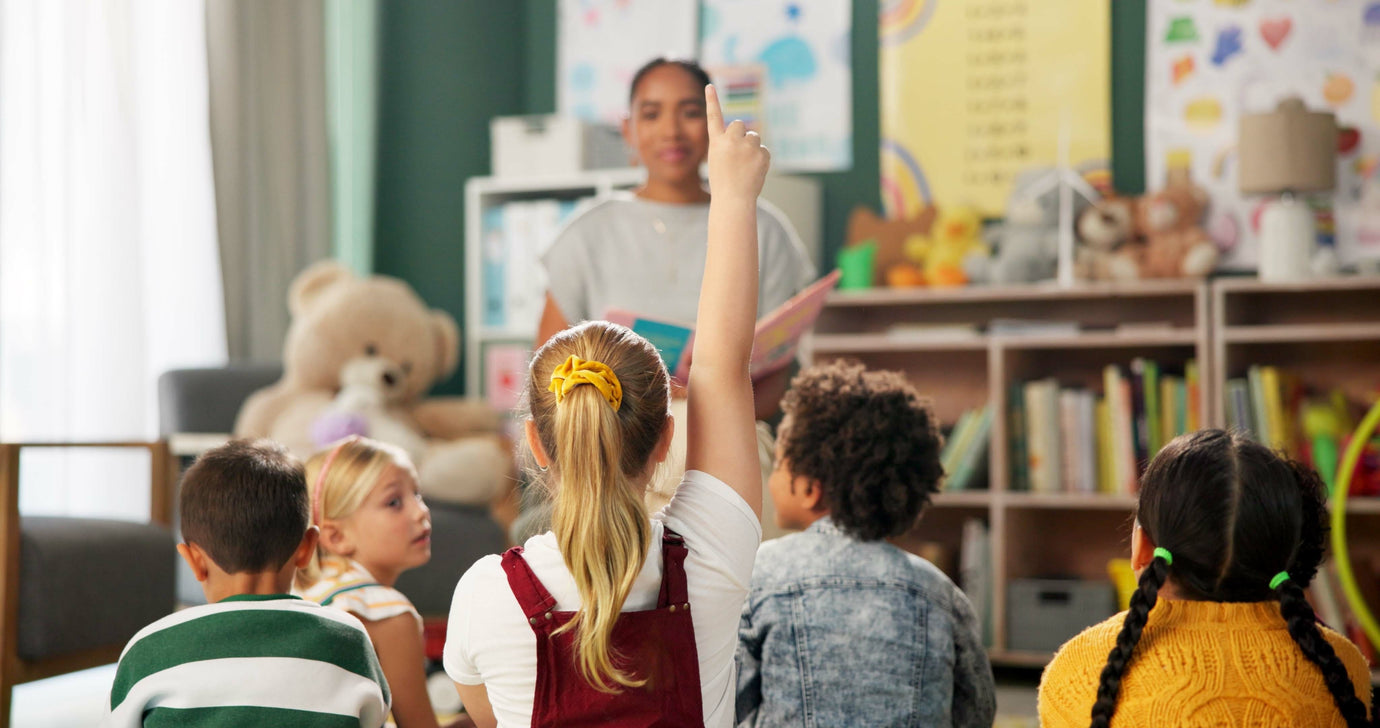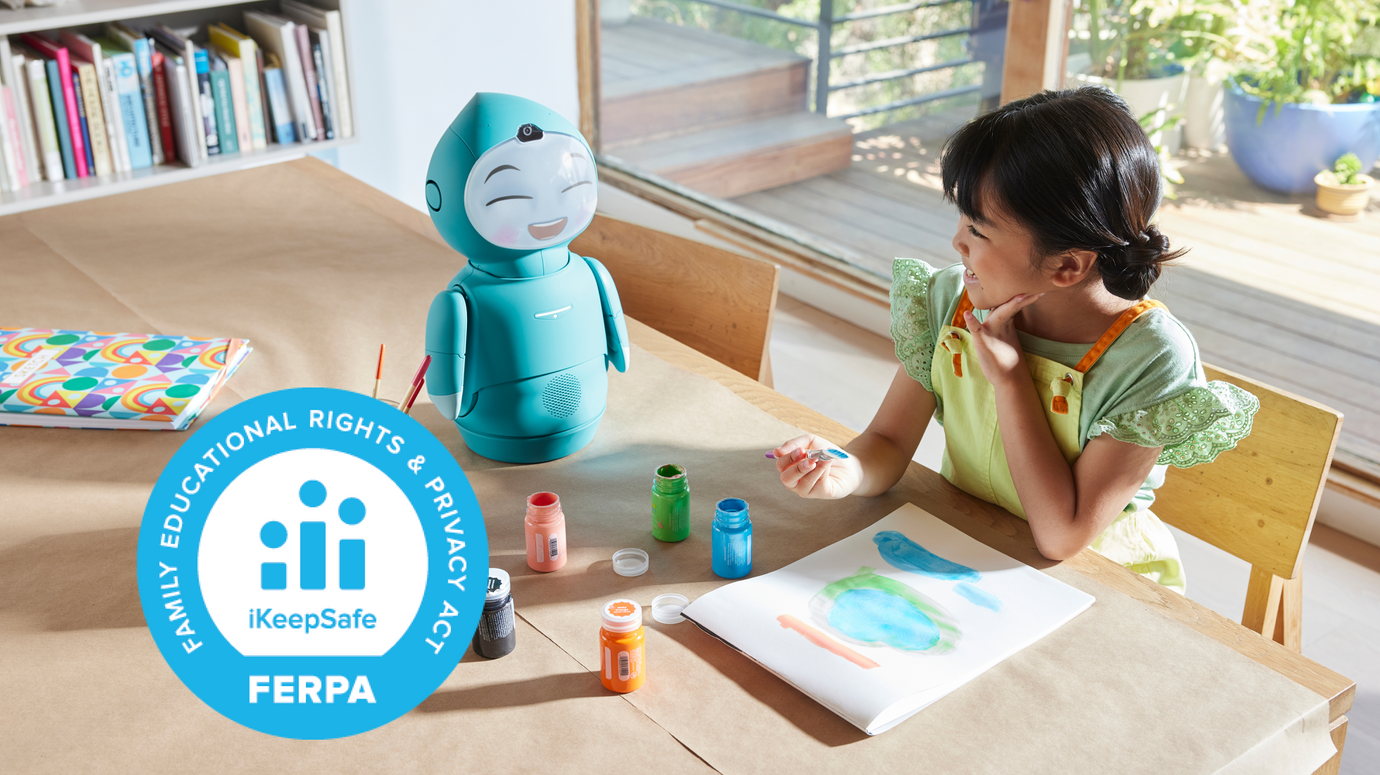5 Ways to Teach Kids Gratitude And How to Deal With Disappointment Through The Holiday Season And Beyond

Mountains of cookies, miles-long strings of twinkling lights, decorated trees that reach for the sky. And – as retailers and kids aim for – piles upon piles of gifts. The winter holiday season can easily become a time of excess. Amongst all the overabundance, one way to help our kids – and us caregivers – stay grounded is to focus on gratitude.
Why teach gratitude to kids?
If the push to practice gratitude sounds a little cheesy, never fear: there’s lots of great research pointing to concrete positive physical and mental health benefits of living a gratitude-filled life.
For example, gratitude seems to be associated with more academic success, empathy, strong relationships, and happiness. Other studies show that people who are grateful also experience less depression, stress, envy, and aggression. But wait - there’s more! There also seems to be a correlation between more gratitude and improved sleep quality and blood pressure. These studies show correlations, so it’s not possible to say if gratitude causes these outcomes, if these outcomes are the cause of grateful feelings, or if there’s something else entirely at play. That said, Brene Brown, the researcher and popular public speaker, feels pretty confident about the effect of gratitude on our outlook. She includes this quote from a Jesuit priest in a blog entry describing her own research on the connection between gratitude and joy: “It’s not joy that makes us grateful, it’s gratitude that makes us joyful.”
Now who doesn’t want more joy in their life?
How to practice gratitude
Gratitude is something to work on year-round. But with all the excesses and materialism of the holidays, if your family doesn’t already practice gratitude on a regular basis now’s a great time to get started.
There are lots of ways to establish and maintain a practice of gratitude. If it feels kind of weird at first, it’ll get easier with practice! Here are just a few examples of how to express gratitude:
Take time to actively think about what you're grateful for.
Encourage everyone in the family to explicitly express what they’re grateful for. Even on the most grumpy days, there’s some reason to give thanks whether it’s the sun in the sky, a yummy snack, a warm cup of tea, or a funny joke. And the more you get going thinking and talking about specific things you’re grateful for, the easier it will be to feel full of gratitude.
Having trouble getting started? Use an acrostic poem. That is, take a simple word – for example, “THANKS” – and think of something to be grateful for that starts with each letter of that word. For example, your kid could easily come up with: I’m grateful for Toys, Heat, Apples, New friends, Kittens, and Socks that make my feet feel cozy. Write it up on a poster and hang it on the wall for a lasting reminder.
Or, you could use these prompts, courtesy of Therapist Aid.com:
- Today I had fun when…
- I appreciate (person) because…
- Something I like about myself…
- A special memory i have of my family…
- Something that made me smile today was…
- I am proud of myself because…
- Check out https://www.therapistaid.com/worksheets/gratitude-jar for more
Document your gratitude with these examples.
Now that you’ve thought of specific reasons to be grateful, consider displaying your gratitude in these fun ways so you can all appreciate and document what everyone came up with.
Gratitude tree. Your tree can be two dimensional – like a drawing, collage, photograph, or painting. Or it can be a three dimensional sculpture. Get creative with whatever materials you can find, including actual tree branches that you collect together as a family and anchor in a vase or pot with pebbles, marbles, or dirt. Just make sure that it has plenty of branches so there’s room to display lots of “leaves” of gratitude. Because here comes the fun part! Write down things you’re grateful for on paper cut to look like leaves, and tie or paste them to the branches. Come back often to take a look at what you’ve gathered.
Gratitude jar. Grab an empty jar and decorate it with paint, collage, ribbons, stickers, or whatever feels right. Have everyone participating write down three (or more!) things they’re grateful for and add them to the jar. Take a moment to discuss what everyone wrote down and then put them in the jar. If you make this a regular routine, new discussions can start with fishing out some papers from previous sessions and re-visiting what made you all feel grateful last time.
Gratitude circle. Gather the family together and have each person say something they’re grateful for. Simple as that. If you’re a large group (like maybe you’re doing this during a big family holiday gathering) it can be fun to write those gratitude ideas down on pieces of paper, gather them all in a bowl, and have each person pick a slip to read aloud. For extra fun, make it a game by trying to guess who wrote it!
Gratitude circles can also be made into a regular family habit. Every week, take a moment to gather together and think about your interactions with each other over the past week. Find small things that each member of the family did that perhaps didn’t get recognized, but deserve a moment of gratitude. For example, you could say thank you to your kids for remembering to put their backpacks away after school, or they could say thank you to you for preparing their lunch.
Gratitude journal. Expressing gratitude doesn’t have to be a group activity to be useful. The practice can be just as impactful as an individual experience. Pick a beautiful notebook and designate it as a gratitude journal. Every day, take a few minutes to write down something you’re feeling grateful for that day. Grownups and kids of all ages can have their own journal. Kids that aren’t old enough to write can draw a picture of what makes them feel grateful.
Choose books, movies, and TV that showcase gratitude.
The stories kids read, hear, and watch can have a powerful impact on them. Help kids incorporate gratitude into their lives by choosing gratitude-filled stories that demonstrate what gratitude looks like. To find books, movies, or TV shows that do just that, consider looking at lists like this one from Common Sense Media, Movies that Inspire Gratitude.
Focus on giving to teach gratitude.
Kids are naturally egocentric (meaning, they think the world revolves around them); it’s just part of their normal developmental path. So kids are always naturally interested in what’s in it for them, or in other words, it’s all about me, me me! This can easily get magnified during the holidays so it can help to work on shifting the focus away from receiving and towards giving instead. There are lots of ways to give to others, especially during the holidays. Here are just a few – and to make it meaningful for your kids, make sure that they’re as intimately involved with these projects as possible.
Donate. It’s a great time of year to think about donating. Giving money is always nice, but it’s also pretty abstract for kids, especially younger ones. If you can, focus on getting them involved in something tangible. For instance, together you can gather clothes or household items that you don’t use anymore and take them to a local shelter or donation drop. Some families even establish a yearly ritual. Before the holiday, give your kid a box to fill with toys and items they no longer use. Talk with them about how you can pass the box on to give to another kid who will love to use them.
Get involved in local charity projects. Is there a neighborhood clean up you could participate in? Or maybe a food bank needs help sorting food donations. There are lots of ways to donate time and hands on help.
Create care packages. Around the holidays, there are often toy drives or groups that work on assembling care packages to give to families in need. Find one in your local community and enlist your kid’s help in choosing the right toys or items to fit in the package. Regardless of how much information you have about the recipient, you can talk to your kid about what someone might appreciate – and by doing that you’re helping them develop empathy.
Make gifts for each other that don’t cost money. Who says that gift giving in families with kids is a one way street? Encourage your kids to consider what they are going to gift you, their wonderfully loving caregivers! Just remember to stress that it’s not about spending money; the important part is to do something nice and thoughtful for someone else. Depending on your kid’s age and ability, they can draw a picture, make a special craft, offer to cook dinner or bring you breakfast in bed. Or, they can make a coupon book of fun things they can do for you – the more creative the better! For example, coupons can be good for “one night of taking a bath without whining” or “one foot massage.”
Be clear about limits to help kids have realistic expectations.
Sure it’s fun for kids to make a wish list, but what isn’t fun is when they think making the list means they’ll be getting everything on it. Make it clear from the start just how much they can realistically expect to get. Talk with them to help identify what their priorities are so you know where to focus. You can get creative with your explanations for why they might not get everything they ask for: “Santa just doesn’t have room on his sled for everything, so make sure you mark the most important things!” For older kids you can even discuss a budget and make it clear that your family can’t exceed a certain amount for gifts.
With holiday excess, it’s hard to remember, but less really is more. Kids who have fewer toys show more focus and creativity in their play. In fact, having too much can be overwhelming and create confusion and distractions. Though it’s hard to do when they look at you with those adorable, pleading eyes, saying no and setting limits is an important way for them to learn that just because they want something doesn’t always mean that they will get it. Of course, turning no into a yes is a great option too. For example, “No, I’m sorry I can’t buy you that new action figure. But when we get home, I can help you find all the action figures you already have and let’s play with them together!”
Give kids responsibility.
Being responsible for something can give kids satisfaction and help them develop feelings of confidence and competence. Involve them in chores, give them tasks to do, and help them feel useful. As an added bonus, when kids contribute to getting dinner made or the house cleaned up, it can also help them appreciate all the hard work that goes into these tasks. And that, in turn, may help them be more aware and grateful for what they have.
Show kids gratitude by modeling it yourself.
As with anything we want to teach our kids, one of the best ways to give them the message is to practice gratitude ourselves. Explicitly show them all the ways you practice gratitude and make sure to express gratitude often. And, don’t forget to show your kids how grateful you are for them! Whether they did something really special or super mundane, it’s always a great idea to tell them how much you appreciate them.
Responding to "ingratitude”
All this talk of gratitude sounds wonderful (and it is!). But, let’s be honest – kids are kids. And there will be times when they fail to show gratitude, act selfishly, feel entitled, or are just plain disappointed because they didn’t get what they wanted. And when that happens, take a deep breath and have patience. Remember that raising kids is a long-term investment and the results of all your hard work may not always be immediately apparent! Here are some more practical tips for helping them deal with disappointment:
What to do when kids feel disappointment
Listen, validate, empathize.
Feelings are real, and can often be overwhelming for kids. Allow them to feel disappointed. Feeling sad that they didn’t get all the gifts they’d asked for is natural, and it doesn’t make them bad or selfish. Validate and empathize by letting them express their feelings. Give them a hug. Say something to show you understand them, such as “You really wanted that. It’s so hard when we don’t get what we want.” Model healthy coping strategies by meeting them with calm and loving responses. Simply feeling loved and understood can help take the intensity of big feelings down a notch or two.
Teach kids strategies to deal with disappointment.
For example, self-calming techniques can help turn down big feelings. Help kids learn calming exercises like deep breathing, distraction, exercise, or curling up in a special cozy corner of the house for some quiet time.
Help kids “de-personlize” disappointment.
That is, help them understand that not getting everything they wanted is not a personal rejection. Here’s the time to re-visit those clear expectations you’d set before the holidays. Depending on the age of your kids, remind them that there was a budget the family had to respect, or that poor Santa just couldn’t carry any more toys.
Teach delayed gratification to children.
If kids learn to believe that all their requests will be immediately granted, it’s inevitable that they’ll be disappointed sooner or later. Once you’ve set a clear and reasonable limit, avoid overindulging or giving in to their requests. They may whine, back talk, or engage in emotional blackmail, as they try everything they know of to get what they want. But those techniques are natural and your kids are just experimenting with them to see if they work. Stick to your principles. If you feel it’s right, you can help them plan simple ways to gradually get what they’re asking for. For instance, if they want an expensive toy, talk them through things they can do to earn it such as doing extra chores or saving their allowance.
Help them find something they can control.
Sometimes kids feel disappointment because they feel they lack control. And oftentimes, kids don’t have huge amounts of control over their lives. It’s not your job to fix whatever made your kid feel disappointed, but you can help guide them through thinking about alternatives or ways they can gain a sense of control. For instance, suggest alternatives like “I know we can’t X, but what could we do instead?” or “I know you didn’t get X, but how can we still make this a special time?”
Be patient with kids.
It’s worth saying again because it’s so important. Patience. Lots of it!
Make a habit out of practicing gratitude, during the holidays and beyond
There are so many reasons why explicitly focusing on gratitude can be a positive practice to incorporate into your family’s routine. This is particularly so during the holiday season, when stress levels are high and expectations can easily turn to disappointment. Working on establishing a practice of gratitude can be a wonderful protective factor and help soften the blow. In fact, as the Harvard Health Publishing blog states, “gratitude helps people refocus on what they have instead of what they lack.” (Giving Thanks Can Make You Happier) So why not take the first step and put aside a minute right now to jot down something you’re feeling grateful for?







